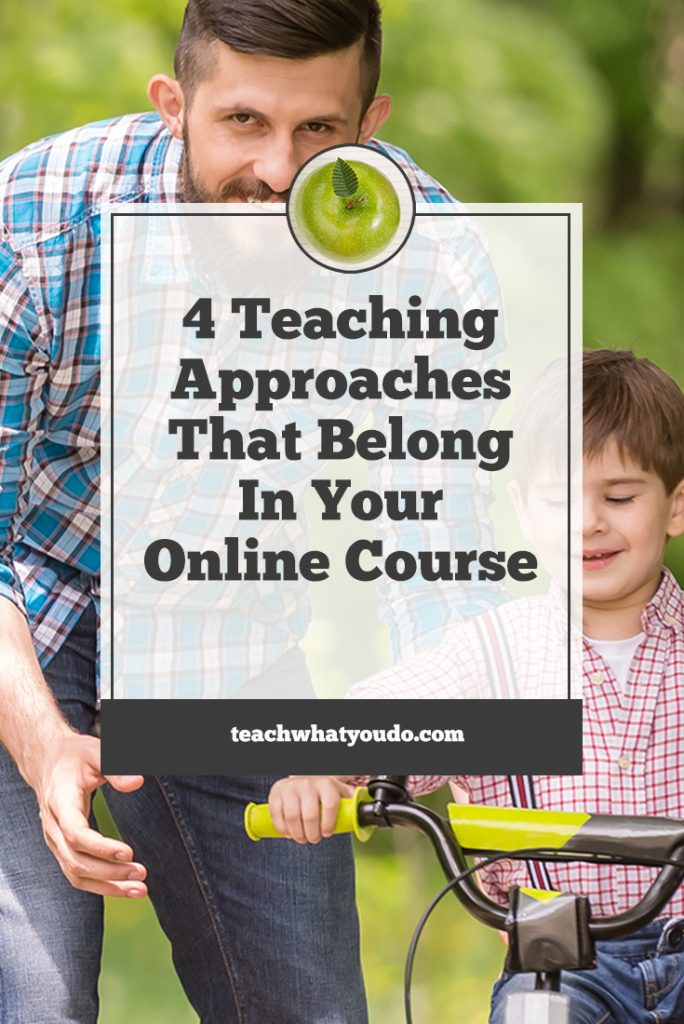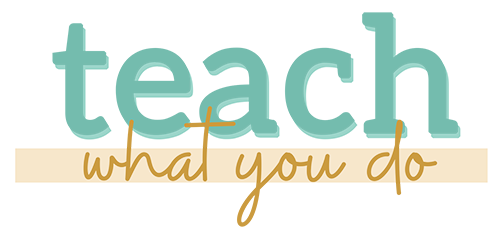 Your online course should be designed to deliver a path to transformation for your students. You're not selling information but, rather, results. Providing the path to those results will include four kinds of lesson content:
Your online course should be designed to deliver a path to transformation for your students. You're not selling information but, rather, results. Providing the path to those results will include four kinds of lesson content:
- Lecture
- Demo
- Practice
- Roadmap
A key task in designing your course is to look at the kind of class you're teaching and to choose from these lesson content types which will be dominant–and in what mediums the lessons will be delivered.
The kinds of results students will pay for
Your students will value–and pay for–arriving easily and solidly at a situation that has one or more of the following:
- MONEY OR SECURITY. Does your course result put more money into your students’ pockets–either through savings or earnings capabilities? Closely related to money is security—while money is hard and cold, security is more personal, and the need for it is fundamental.
- ADMIRATION OR STATUS. Your students want to be appreciated, but even more than that to be seen as important. Will your students have a higher level of status as a result of completing your course?
- LOVE OR COMPANIONSHIP. Do you offer a course that could make your student a more attractive and desirable friend or companion?
- PERSONAL GROWTH OR TRANSFORMATION. A course delivering this would move your students to greater self-understanding or self-expression, Creative classes and transformational coaching experiences can both offer this kind of student incentive.
- IMPROVED HEALTH OR FITNESS. We all want to live a long and healthy life. Does your course offer such a result.
- LESS HASSLE, MORE FREE TIME? Time is a valuable commodity. It buys the ability to make more money, or gives opportunities for self-actualization activities, or is simply a valued end goal in itself. Does your class get your students to a goal with more efficiency, less stress, and less uncertainty?
These are the 4 teaching approaches you'll mix–in varying proportions–to guide your students to success
To make course content that serves these ends, you'll use a combination of the following kinds of lesson content:
1. LECTURE.

This is when you convey basic fasts, principles, and concepts that are key to a successful student result.
For example, if you're teaching graphic design, this would include teaching Gestalt principles of design and basics of color.
In an online class, this content could be presented with:
- a written lesson
- a recorded video
- a recorded audio
- a live virtual event (webinar)
{I've got a couple related and helpful blog posts to go deeper into those mediums: How to Choose Your Online Meeting Platform and Tools for Live eCourse Teaching, and 4 Ways to Create Video Lessons for Your Online Course.}
With skillful lesson planning, you could weave the lecture material into the second kind of lesson content: the demo.
2. DEMO.
 This teaching approach is when you show your students, step-by-step, how to get results: how to make a hat or style a still-life photograph or play a harmonica.
This teaching approach is when you show your students, step-by-step, how to get results: how to make a hat or style a still-life photograph or play a harmonica.
In an online class, this content could be presented with:
- a written lesson that includes illustrations
- a recorded video showing you, on camera, demonstrating the work (i.e., upholstering a chair or grooming a horse)
- a recorded video showing the work you're doing demonstrated on a computer screen (i.e., scheduling work with a project management tool or making a logo with graphic design software)
- a live virtual demo/event (i.e., reading tarot cards during a live webinar or working through a project live on camera)
3. PRACTICE.
 With a lecture and/or demo presented, your students will then need to put what they've learned to work–through practice or even implementation. They need to get out there and install pedals on a bike or begin a meditation practice or code a basic program.
With a lecture and/or demo presented, your students will then need to put what they've learned to work–through practice or even implementation. They need to get out there and install pedals on a bike or begin a meditation practice or code a basic program.
In an online class, do this work by:
- defining specific assignments and exercises for your students
- sequencing and presenting those exercises alongside lecture and demo materials for best flow
- providing opportunities to share within a community or live virtual event
- and, optionally, you might provide personalized feedback to your students.
4. ROADMAP.
Pr ovide checklists, workbooks, and other guides that outline or detail the work that must be done. These can parallel the lectures or demos–or supplement and go into new territory. These guides can be valuable to PUSH your students to do the right work, step by step.
ovide checklists, workbooks, and other guides that outline or detail the work that must be done. These can parallel the lectures or demos–or supplement and go into new territory. These guides can be valuable to PUSH your students to do the right work, step by step.
In an online course, these workbooks, worksheets, checklists, diagrams, and “cheat sheets” are usually written documents in pdf format. Offer your students the ability to print these worksheets and use them with pen and paper OR to use them “interactively.”
An “interactive” worksheet is also known as a “fillable pdf.” This is a pdf document that can be saved to your computer, filled out digitally, and saved again. Another option is to use interactive “forms” tools within the classroom and save the work there.
Your mix of these lesson approaches will vary depending upon the kind of course you're teaching
Different course topics will demand a different mix of these 4 approaches–often with all four included, but with the emphasis varying.
Consider these four basic types of course topics and how the lesson emphasis varies for each:
1. SKILL OR TOOL.
 These focused kinds of courses get students to a result in which they are completing a discrete project or learning to use a prescribe tool.
These focused kinds of courses get students to a result in which they are completing a discrete project or learning to use a prescribe tool.
Examples include:
- How to Edit Photos with Photoshop CC
- How to Make a Quilt with Your Home Sewing Machine
- Learn 3 Harmonica Songs
In this kind of course the DEMO lesson will be dominant. If your course is of this type, you'll also need to decide what your preferred medium for presentation will be. Will your lessons be presented with live-demo video, screen capture video, or written and illustrated pdfs?
2. SPECIALIST KNOWLEDGE.
 When you're going beyond the focused single tool or skill and teaching a broader class built on knowledge that you've accrued through years of study and/or practice, you're moving into specialist territory.
When you're going beyond the focused single tool or skill and teaching a broader class built on knowledge that you've accrued through years of study and/or practice, you're moving into specialist territory.
Consider the “skill” class example of “How to Edit Photos with Photoshop CC.” It's specific and circumscribed. A class on “Graphic Design,” though, while it might include photo editing, will include more tools and projects. It falls into this area.
In this kind of course the LECTURE lesson is going to become as important as the DEMO lesson, and perhaps even more so.
3. SYSTEM.
 A course that takes students from beginning to end, offering an “A to Z” solution or path to their desired result is a “system” or “formula” or “blueprint” course.
A course that takes students from beginning to end, offering an “A to Z” solution or path to their desired result is a “system” or “formula” or “blueprint” course.
In this kind of course, it's important to include ROADMAPS to complement lecture and demo material.
4. COACHING AND BELIEFS.
 With this kind of class you're moving your students to regular practices, to a new “way of being.” While you might include lecture, demo, and roadmap aspects here, the PRACTICE aspect of teaching becomes especially important for moving your students forward.
With this kind of class you're moving your students to regular practices, to a new “way of being.” While you might include lecture, demo, and roadmap aspects here, the PRACTICE aspect of teaching becomes especially important for moving your students forward.
To summarize
The successful and profitable online course will move students to results that most likely include one or more of
- money or security
- admiration or status
- love or companionship
- personal growth or transformation
- health or fitness
- saved time or a system
Primary lesson formats for teaching are:
- Lecture
- Demo
- Practice
- Roadmap
The kind of course you're creating will drive your primarty lesson format and medium for delivery. Come on over to our free Facebook group, and talk to us about your class and the primary lesson and medium formats you're thinking are best fits for getting student results.
